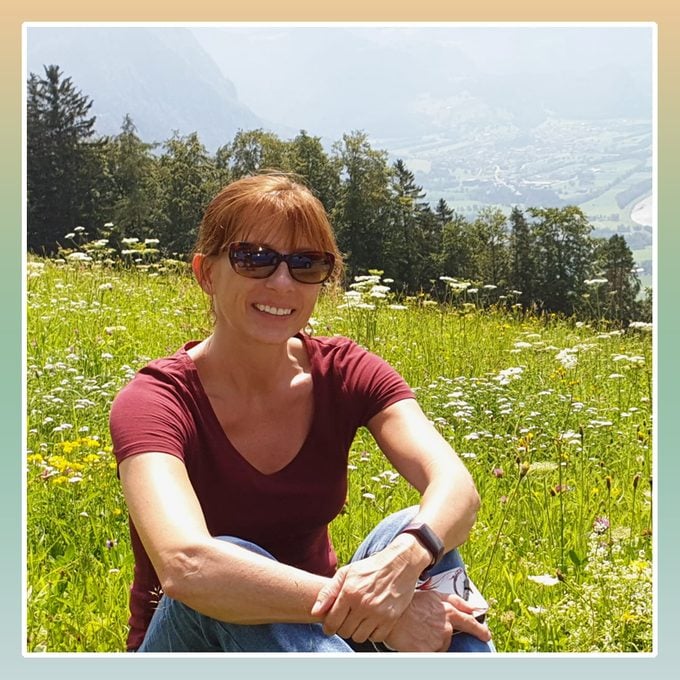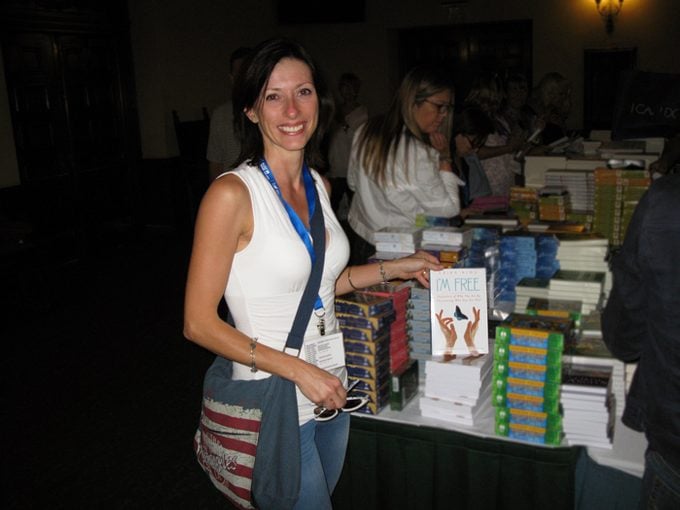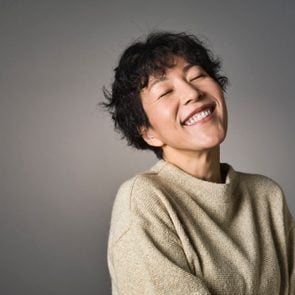How I Changed My Mindset to Conquer Fear and Find Happiness
Updated: Jun. 29, 2021
After growing up unhappy, insecure, and fearful, a woman harnesses the power of positive thinking to build confidence and find happiness.
Our editors and experts handpick every product we feature. We may earn a commission from your purchases.

While there is no one definition of happiness, experts generally consider it to be a sense of contentment and satisfaction with life.
External factors, such as material things and experiences, can offer a temporary sense of happiness, but feeling truly happy comes from within—a lesson author Erika Kind learned the hard way.
Here, Kind shares how she went from feeling fearful and insecure to finally finding happiness.
A lack of confidence in childhood
From childhood, I never had much self-confidence. I barely had my own opinion. Having what was considered the “wrong opinion” became one of my biggest fears. I was taught that if I wanted to “make it,” I needed to develop a specific personality—and it wasn’t one that came naturally to me.
The dominant people in my life, like my father, made it clear that I could do things their way or not at all. If what I thought didn’t fit with how others wanted me to think, I was judged, humiliated, and insulted. Soon, my brain began to ask “what must I think?” instead of “what do I think?” in order to avoid trouble.
I was convinced that thinking differently or acting differently meant there was something wrong with me. When I was around people like my father, I was afraid to speak, afraid to share my own thoughts. It didn’t leave much room for a child to develop her own personality.
Losing myself in my teenage years
As a teen, I began to lose myself more and more. I isolated myself from my family and tried to protect the small, vulnerable part of me that I felt was truly me. I built up a wall around that part of myself so I could pretend to be the person I had to be, which was incredibly difficult. It felt like I was cheating on myself.
I buried my emotional side, only letting it out when I was alone or with friends. Thankfully, I had wonderful friends—my best friend from that time is still my best friend today. But around my family, I became quiet and withdrawn. I didn’t want to risk having my feelings trampled on.
Growing up shy, insecure, and fearful
I grew up a shy, insecure, and fearful kid who had trouble trusting people. No matter how hard I tried to be my true self in private, I was never authentic. This convinced me that I wasn’t even good enough to be accepted by myself.
I felt helpless and like an alien, so different that no one would be able to understand me. It was my destiny to be insecure and afraid, I thought. I didn’t even consider that I could be any different than I was.
I didn’t talk to anyone about what I was going through, didn’t see any doctors, or go find a therapist. Weakness was never an option. But as a grew into adulthood, the hidden “me” that I had walled off so long ago started to rebel. She was tired of being trapped and wanted to come out.
Harnessing the power of my thoughts
One day, I just stopped and said to myself, “This is not who you are or who you want to be. But who are you?” That was the beginning of my journey back to myself.
I had always been interested in psychology and spirituality, though I had never cultivated these interests. But as the drive to be my true self grew, I revisited the topics. I wanted to learn more about myself as well as people in general.
So I did some research. I read many books, the most life-changing of which were those by Dr. Wayne Dyer, who was a self-development and spiritual growth expert. I studied things like energy healing and aromatherapy, and learned how to read tarot cards. I attended seminars, workshops, and lectures, including one with Dr. Dyer himself, during which I felt embraced by his peaceful energy.
Then came the important part: applying the things I learned to my own life. The most impactful action I took was to harness the power of my thoughts. I paid attention to my thoughts, noticing how often I judged myself negatively for having them, then worked to change the negative energy around my thoughts, my actions, and my life in general.
Learning to love myself
In September of 2009, I attended a conference in Laguna Beach, California. A few days later, I was sitting on the beach, watching and listening to the crashing of the waves, when I suddenly felt different.
For the first time in my life, I felt a true and loving connection to who I was as a person. I felt liberated and I knew that as long as I listened to the voice of my soul—the voice I’d kept locked away—everything would be okay. I had already begun feeling this way, but that day it felt like the final veil had been lifted and I knew I had nothing and no one left to fear.
Returning home with a new outlook
I returned home, armed with my new empowered outlook. No more blaming others for my difficulties—I’d started taking responsibility for my own happiness. Whenever I had a thought that I recognized as destructive, I actively exchanged it for a constructive one.
For example, driving my three kids to activities every afternoon would always put me in a bad mood. I would think, “Here we go again. Driving all afternoon with no time for anything else. I hate it.” I exchanged that for, “I’m so thankful that I can take the time to drive my kids where they need to go. What a blessing to be able to make it possible for them and see their joy.”
Making this change took constant attention at first, but it got easier after about a week. And after a month or two, I noticed that the majority of my thoughts were constructive. And the benefits were amazing. My feelings changed from resistance, impatience, and irritability to awareness and appreciation. It made me more courageous, more tolerant, and more able to see the beauty in everything I experienced.
Another strategy I used was making a list of all my fears. Once I did that, it was time to face each fear. If any of them appeared in my daily life—say, if I felt like I was in the wrong for no reason—I did not back away but addressed it immediately. I knew that these were the things that were holding me back, and I had no excuse but to face them.

Uncovering a new purpose in life
Today, I feel that I have laid a foundation for happiness as a natural state of being. I still experience sadness and frustration, but I don’t let those emotions control me anymore. My fears now provide an opportunity for growth. They show me that I am standing at the door of another breakthrough, and I can’t get enough of those breakthrough moments.
Looking back, that’s how I see my past experiences as well. I don’t blame my father for the way he was—he was overwhelmed and shaped by his own difficult youth. He wasn’t a bad person by any means; if you needed him, you could rely on him 100 percent. He did what he thought was right and probably wasn’t aware of how it was making me feel. The experience was a necessary part of my journey to seeing myself more clearly.
I’ve also uncovered a new purpose: to share what I experienced in the hope that others may be inspired to change their lives for the better. I’ve written five books, including I’m Free: Awareness of Who You Are by Discovering Who You Are Not, given lectures, seminars, and workshops, and founded a therapy practice. I have also participated in book signings, which has given so much meaning to my life.
I was unhappy, but I was able to change my mindset. We are not will-less victims to be programmed by those around us. We are the programmers of ourselves!
—As told to Alyssa Sybertz



